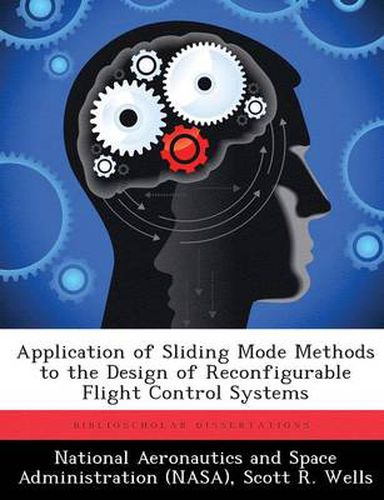Readings Newsletter
Become a Readings Member to make your shopping experience even easier.
Sign in or sign up for free!
You’re not far away from qualifying for FREE standard shipping within Australia
You’ve qualified for FREE standard shipping within Australia
The cart is loading…






This title is printed to order. This book may have been self-published. If so, we cannot guarantee the quality of the content. In the main most books will have gone through the editing process however some may not. We therefore suggest that you be aware of this before ordering this book. If in doubt check either the author or publisher’s details as we are unable to accept any returns unless they are faulty. Please contact us if you have any questions.
Observer-based sliding mode control is investigated for application to aircraft reconfigurable flight control. A comprehensive overview of reconfigurable flight control is given, including, a review of the current state-of-the-art within the subdisciplines of fault detection, parameter identification, adaptive control schemes, and dynamic control allocation. Of the adaptive control methods reviewed, sliding mode control (SMC) appears very promising due its property of invariance to matched uncertainty. An overview of sliding mode control is given and its remarkable properties are demonstrated by example. Sliding mode methods, however, are difficult to implement because unmodeled parasitic dynamics cause immediate and severe instability. This presents a challenge for all practical applications with limited bandwidth actuators. One method to deal with parasitic dynamics is the use of an asymptotic observer in the feedback path. Observer-based SMC is investigated, and a method for selecting observer gains is offered. An additional method for shaping the feedback loop using a filter is also developed. It is shown that this SMC prefilter is equivalent to a form of model reference hedging. A complete design procedure is given which takes advantage of the sliding mode boundary layer to recast the SMC as a linear control law. Frequency domain loop shaping is then used to design the sliding manifold. Finally, three aircraft applications are demonstrated. An F-18/HARV is used to demonstrate a SISO pitch rate tracking controller. It is also used to demonstrate a MIMO lateral-directional roll rate tracking controller. The last application is a full linear six degree-of-freedom advanced tailless fighter model. The observer-based SMC is seen to provide excellent tracking with superior robustness to parameter changes and actuator failures.
$9.00 standard shipping within Australia
FREE standard shipping within Australia for orders over $100.00
Express & International shipping calculated at checkout
This title is printed to order. This book may have been self-published. If so, we cannot guarantee the quality of the content. In the main most books will have gone through the editing process however some may not. We therefore suggest that you be aware of this before ordering this book. If in doubt check either the author or publisher’s details as we are unable to accept any returns unless they are faulty. Please contact us if you have any questions.
Observer-based sliding mode control is investigated for application to aircraft reconfigurable flight control. A comprehensive overview of reconfigurable flight control is given, including, a review of the current state-of-the-art within the subdisciplines of fault detection, parameter identification, adaptive control schemes, and dynamic control allocation. Of the adaptive control methods reviewed, sliding mode control (SMC) appears very promising due its property of invariance to matched uncertainty. An overview of sliding mode control is given and its remarkable properties are demonstrated by example. Sliding mode methods, however, are difficult to implement because unmodeled parasitic dynamics cause immediate and severe instability. This presents a challenge for all practical applications with limited bandwidth actuators. One method to deal with parasitic dynamics is the use of an asymptotic observer in the feedback path. Observer-based SMC is investigated, and a method for selecting observer gains is offered. An additional method for shaping the feedback loop using a filter is also developed. It is shown that this SMC prefilter is equivalent to a form of model reference hedging. A complete design procedure is given which takes advantage of the sliding mode boundary layer to recast the SMC as a linear control law. Frequency domain loop shaping is then used to design the sliding manifold. Finally, three aircraft applications are demonstrated. An F-18/HARV is used to demonstrate a SISO pitch rate tracking controller. It is also used to demonstrate a MIMO lateral-directional roll rate tracking controller. The last application is a full linear six degree-of-freedom advanced tailless fighter model. The observer-based SMC is seen to provide excellent tracking with superior robustness to parameter changes and actuator failures.